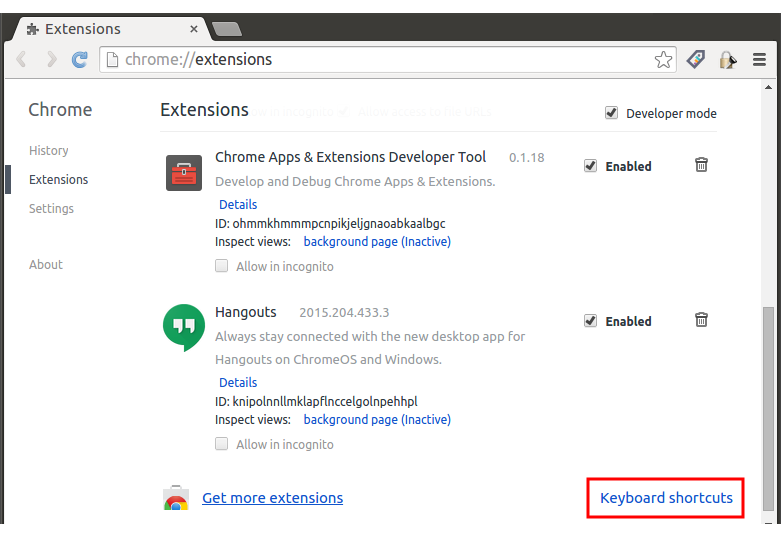Version 2.0 released
Today we are exited to introduce another major milestone in the development of TagSpaces containing many new exiting features and improvements.
Today we are exited to introduce another major milestone in the development of TagSpaces containing many new exiting features and improvements.
Recently I discovered a nice feature in the extension management page of the Chrome browser. Here at the end of the page there is a link called "Keyboard shortcuts". See the red area of the screenshot below.

The first release for 2015 went online recently, so now it's time to describe what was added to the product. The most important improvements were the redesign of the search functionality and adding capturing of web pages or so the called web-scrapping or -clipping.
In this post I will explain how you can export your notes from Evernote as plain text files in the popular Markdown format. The purpose is of course to make the migration from Evernote to TagSpaces or any other file based note-taking application as painless as possible.
On 22th November we released version 1.9.0. The main improvement is the addition of the 64bit version of TagSpaces for Windows and Mac OS X, based on node-webkit version 0.11.x. Further changes are:
One major improvement coming with version 1.8.6 is the redesigning of the file edit functionality. Now you are not forced anymore to confirm every time the saving of a file. And if you have already edited some file, a star will appear behind the file extension, letting you to know this. Since the start is present, editing of title or adding of tags will be impossible until you save your changes.
Version 1.8.5 was released some weeks ago, and now is a high time to present the major new features provided by it.
We just released version 1.8.3 of TagSpaces including the following enhancement:
This week we released version 1.8.1 of TagSpaces, featuring the following improvements and bugfixes:
download functionality was added, allowing you to save a file locally if you are using the webdav version or just to save a file under another name/location on your device.Almost since the very first releases of TagSpaces back in the 2013, many users did requested a server based version of TagSpaces. They wanted to use the convenient tagging workflow of TagSpaces on their self hosted ownCloud or in general WebDAV instances. So starting from today this is possible, TagSpaces can now run on servers and once installed you can access your files from anywhere.